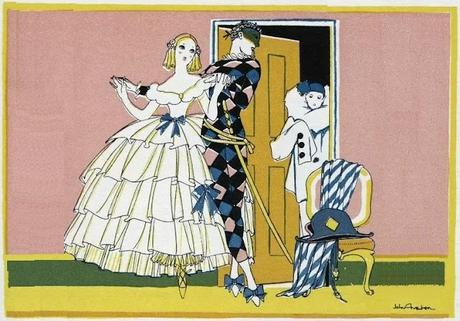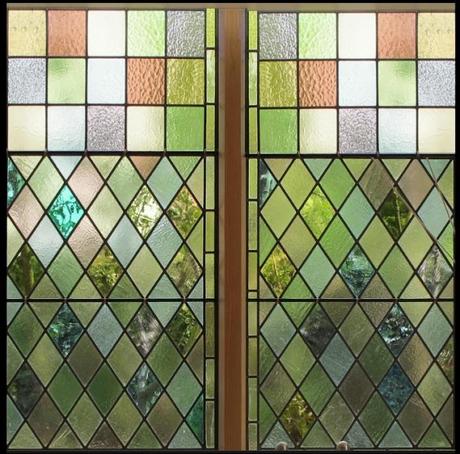When the Italians took him up as the zany Arlecchino in the commedia dell'arte a couple of hundred years later, they emphasised the trickster part of his nature and played down the darker devilish connotations, though he does feature as a demonic presence in Dante's 'Inferno '. By the 16th century he had become a carnival joker and also acquired his distinctive mottled costume of colourful diamonds.

Harlequin with Columbine and Pierrot
Combining variously great physical agility (to tumble, cartwheel, dance) with an ability to mimic, make jokes and even perform sleights of hand, Harlequin in the theatrical entertainments developing in Italy, France and England was an increasingly comical figure, witty and mischievous, part court jester/fool, part magician and part servant and stooge. And it is no accident that he became the joker (in his lozenged apparel) in early packs of playing cards. Hell king to clowning servant: quite a transformation over seven centuries.The most powerful and lasting legacy of the Harlequin appears to be that trademark geometric diamond pattern, derived from the traditional costume, which was originally a patchwork created out of spare scraps of cloth. It is a striking rhombus design repeating itself in a variety of bold colours (red, black, purple, green, blue, pink, yellow), sometimes in a formal sequence, sometimes more randomised. It has featured on the backs of playing cards and in the leaded lights of stained-glass windows (see below) for centuries, more recently in the 18th and 19th centuries as a graphic on the endpapers of hardback books and as gift-wrap. In the mid-20th century it finally entered mainstream fashion. Adele Simpson first popularised a harlequin print on women's clothes in 1940s America and by the 1960s it was everywhere from underwear to skirts and blouses, knitwear, ski-suits, ties, tights, trousers (Freddie Mercury sported a pair), even umbrellas and upholstery - ubiquitous harlequin.

through harlequin glass
I must concede that if ever I had the money and a Tudor (or even mock-Tudor) home, I'd have leaded lights and harlequin glass in at least some of the windows, for the wonderful effect of sunlight through those coloured lozenges. In conclusion, here's how it went down...HarlequinadeHell king, black masqued and sulfurousAdulterer of wives weak in wedlock.Rubicund player on passion's stage,Licentious behind diamond panes.
Evolving corps of comedic culture withQuadrilles and quick quips to shock.Upstart with agile sleight of hand,Immodest knave, delightful zane.
Natty dandy, flamboyant, carnivalesqueAnimus of fancy's fashionable flock.Dissipating through ten centuries, Eventually just a pattern remains.
Thanks for reading, S ;-) Email ThisBlogThis!Share to TwitterShare to Facebook
